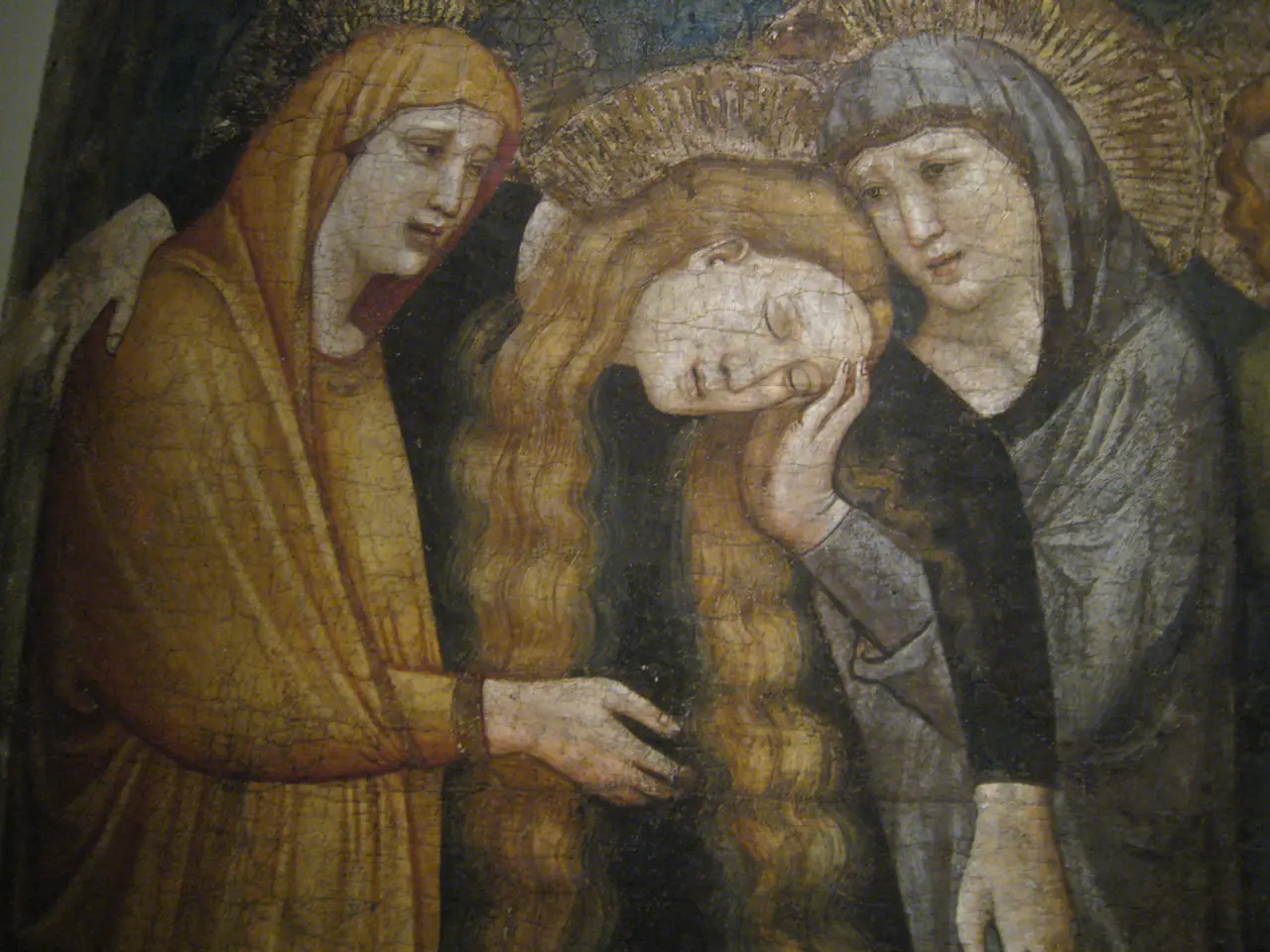Exploration of Microscopic Art's Impact on Brain Structures and Activity Patterns
Discovering the Brain-Stimulating Impact of Microscopic Art
Microscopic art, with its intricate and often abstract visuals, offers a unique experience that engages the brain in distinctive ways. This form of art, when viewed, stimulates neural pathways associated with aesthetic and cognitive processing, particularly the default mode network (DMN).
The DMN, a network that includes the medial prefrontal cortex, posterior cingulate cortex, and angular gyrus, plays a crucial role in aesthetic experience and complex cognition. Unlike during externally focused tasks, the DMN dynamically tracks the viewer’s internal state and contextual engagement when viewing microscopic art, integrating perceptual, emotional, and conceptual information during aesthetic appreciation [1][2].
Research suggests that this network supports the integration of personal knowledge, semantic memory, and ongoing experience, effectively bridging perception and cognition in response to aesthetically rich stimuli. Neural oscillations, such as synchronization and desynchronization of alpha-frequency brain waves (8–10 Hz), are observed, potentially reflecting the brain’s dynamic processing of complex visual inputs [3].
Visual processing areas, like the ventral visual pathway (notably the lateral occipital complex) and the brain’s dorsal visual pathway (frontoparietal physics network), may also contribute to how microscopic art affects perception, especially when such art depicts complex textures or material-like patterns that challenge the brain's interpretation of "stuff" vs. "things" [4].
The primary visual cortex, located in the occipital lobe, is the first to process visual information in microscopic art. As we try to understand and interpret the often abstract nature of microscopic art, our prefrontal cortex gets activated, responsible for complex cognitive behavior, decision-making, and moderating social behavior.
Moreover, frequent engagement with microscopic art can lead to the formation of new pathways in the brain, thanks to neural plasticity, the brain's remarkable capability to reconfigure its connections and pathways based on experiences, learning, and environmental influences. The hippocampus, which plays a role in memory formation and retrieval, becomes active when familiar patterns or subjects are depicted in the art.
A brain fuelled by curiosity is more receptive to learning and can aid in better retention and deeper appreciation of the artwork. Repeated experiences with microscopic art can have a lasting impact on our brain's structure and function, enhancing synaptic strength and allowing for quicker and richer processing of similar stimuli in the future.
In conclusion, microscopic art stimulates the brain’s default mode network and visual processing pathways, engaging in a complex interplay of cognitive and perceptual processing. This stimulation results in a unique aesthetic experience that blends emotional, conceptual, and sensory integration, potentially producing enhanced neural synchronization patterns and cognitive transitions associated with art appreciation [1][2][3][4].
[1] Kosslyn, S. M., & Alpert, N. M. (1995). The cognitive neuroscience of visual art. The Journal of Aesthetics and Art Criticism, 53(3), 233-243.
[2] Zeki, S. (1999). Neuroesthetics: art becomes a science. Nature, 399(6738), 711-713.
[3] Thompson, W. (2007). Mind in Life: Biology, Phenomenology, and the Sciences of Mind. Harvard University Press.
[4] Chatterjee, A. (2015). Aesthetic Neuroscience: The New Science of Why We Love Art. Basic Books.
- The intricate visuals of microscopic art stimulate neuroscientific pathways associated with both aesthetic and cognitive processing, primarily the default mode network (DMN).
- Research indicates that the DMN, comprising the medial prefrontal cortex, posterior cingulate cortex, and angular gyrus, plays a pivotal role in aesthetic experience and complex cognition during the appreciation of microscopic art.
- Unlike during externally focused tasks, the DMN dynamically tracks the viewer’s internal state and contextual engagement when viewing microscopic art, integrating perceptual, emotional, and conceptual information.
- Neural oscillations, such as synchronization and desynchronization of alpha-frequency brain waves, are observed in response to complex visual inputs like those in microscopic art.
- Visual processing areas, like the lateral occipital complex and the frontoparietal physics network, contribute to how microscopic art affects perception, particularly when the art depicts complex textures or material-like patterns.
- The primary visual cortex, located in the occipital lobe, processes visual information in microscopic art initially, and as we try to understand its abstract nature, the prefrontal cortex gets activated for complex cognitive behavior, decision-making, and moderating social behavior.
- Frequent engagement with microscopic art leads to the formation of new pathways in the brain, thanks to neural plasticity, allowing for reconfiguration of connections and pathways based on experiences, learning, and environmental influences.
- The hippocampus, which plays a role in memory formation and retrieval, becomes active when familiar patterns or subjects are depicted in the art.
- A brain stimulated by curiosity, aided by microscopic art, can result in better learning, retention, and deeper appreciation, potentially leading to lasting impacts on the brain's structure and function, enhancing synaptic strength and allowing for quicker and richer processing of similar stimuli in the future.




